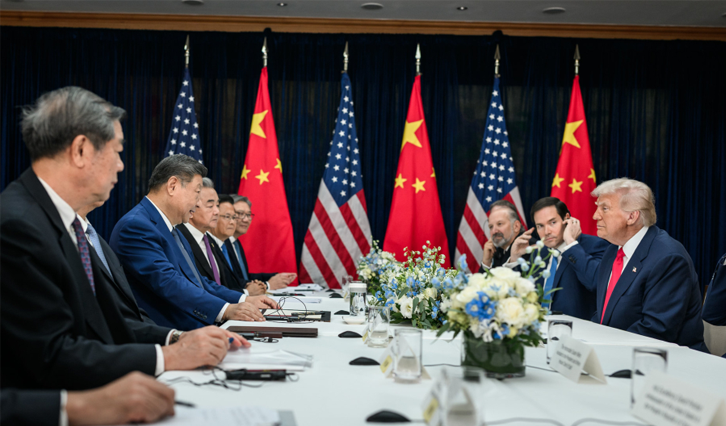If you’re having trouble keeping up with the zigs and zags of President Trump’s trade policies, you’re not alone. American trade policy has swung wildly over the past several months, with tariffs being paused and then reimposed. Certain countries have faced particular volatility. For example, in early October, Trump said that the sticking point in trade talks with Canada was that he wanted to “be a great man” like Canadian Prime Minister Mark Carney, although Trump indicated that a mutually beneficial trade deal was achievable given the “mutual love” between the United States and Canada. More recently, though, Trump further hiked tariff rates on America’s northern neighbor in response to a pro-free trade advertising campaign funded by Ontario, and he is now refusing to even meet with Carney.
These erratic escalations in Trump’s trade war may be deliberate. As Treasury Secretary Scott Bessent explained shortly after “Liberation Day” back in April, “In game theory, it’s called strategic uncertainty, so you’re not going to tell the person on the other side of the negotiation where you’re going to end up.” While Bessent and Trump might label this strategy strategic uncertainty, a previous resident of the White House, Richard Nixon, called it the “madman theory” of diplomacy, and it is an approach that has been tried—mostly unsuccessfully—by leaders as diverse as Nikita Krushchev and Moammar Gadhafi.
Traditionally, leaders seek bargaining advantages by entering negotiations from a position of strength. Being stronger means they can impose more costs on the opponent than the opponent can on them, granting them leverage. To draw an analogy from outside international politics, consider the game of chicken, where two cars race toward each other until one driver swerves, becoming the chicken. In this competition, the driver in the larger car enjoys an advantage because, by virtue of operating a more robust vehicle, she can inflict far more damage on the other car than it can on hers. The result is that her opponent experiences greater pressure to avoid a crash.
Of course, for this logic to work, both sides must care about costs. It is this assumption that madman theory seeks to challenge. A madman, after all, is mad. He does not care about costs either because he subscribes to an extreme set of ideological views that weigh costs differently than most or because he is simply irrational and thus incapable of cost-benefit analysis.
In any event, the threat of suffering costs as a result of his actions does not restrain him. Thus, the theory goes, he has an important advantage in negotiating, and the other side, which is sensitive to costs, is compelled to make concessions rather than risk further escalation. To return to the previous example, if the driver of the smaller car is drunk and thus incapable of rationally weighing risks, he may not recognize his opponent’s strength and plow on regardless, perhaps even accelerating! By discounting his own safety, the operator of the smaller car can take actions that impose grievous harm on the other driver, even if he comes off relatively worse, and thus force his opponent to chicken out and swerve. According to madman theory, it is this asymmetric recklessness that grants the small car leverage.
So how well does this theory hold up in practice? In 2020, we wrote an article that assessed the logic and evidence behind madman theory. What we found should give pause to Trump or any other leader seeking to use this approach. Specifically, we identified three recurring issues that confront leaders attempting to successfully execute a madman strategy.


